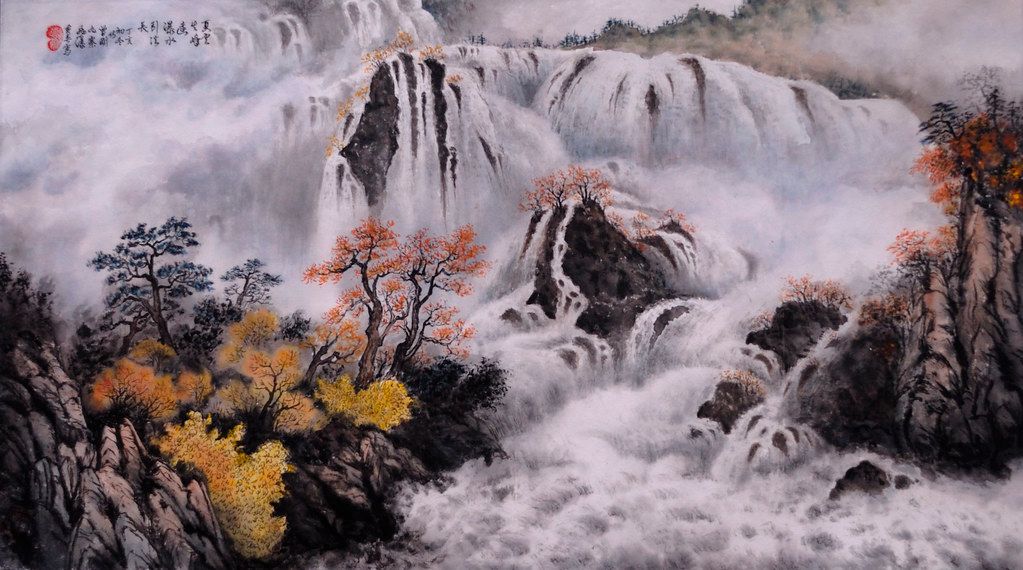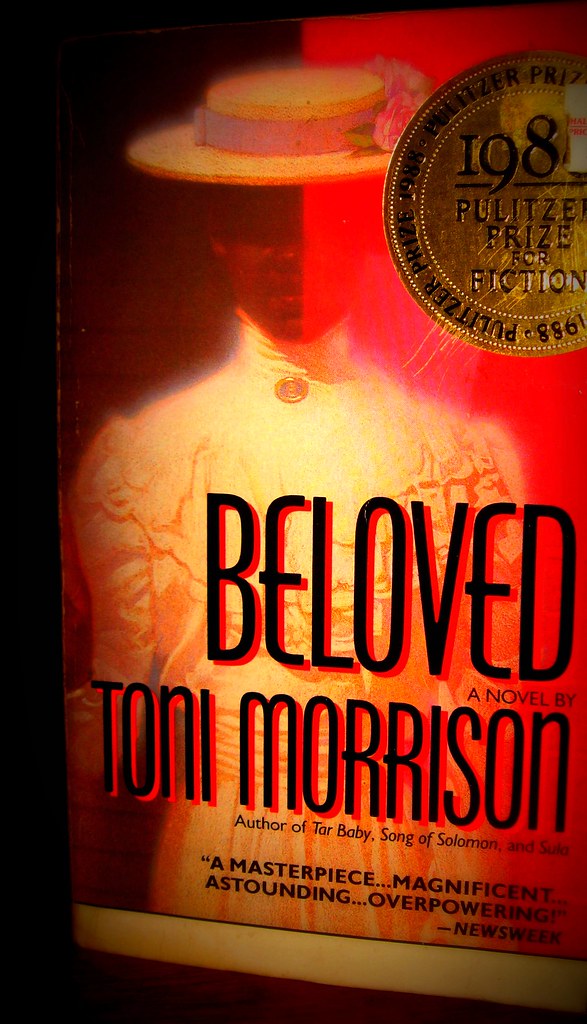Before streaming took over our lives and “Netflix and chill” became a thing, there was a magical time, a hallowed era, when heading out to the video rental store was the highlight of Friday nights and lazy Sundays. We’re talking about those vibrant, buzzing community hubs that were once the absolute cornerstone of movie nights and weekend entertainment. The air hummed with anticipation, the shelves beckoned with endless possibilities, and every visit promised a new adventure. It wasn’t just about renting a film; it was an experience, a ritual, a social event that shaped countless memories.
Each chain, from the local mom-and-pop shops to the colossal industry giants, had its own distinct charm. You remember it, don’t you? The rows upon rows of VHS tapes (and later, DVDs!), the irresistible snack shelves filled with sugary delights, and that thrilling, almost sacred search for the perfect flick that would define your evening. It was a tangible connection to cinema, a world away from today’s endless, often overwhelming, digital libraries. Though these beloved institutions have largely disappeared from our landscapes, the memories they forged still hit us right in the feels, like a sudden reminder of a long-forgotten late fee.
So, grab your imaginary membership card and get ready for a truly tearful and nostalgic journey back to simpler times, the heyday of video rentals. We’re about to take a deep dive into some truly iconic stores that left an indelible mark on our cultural landscape, shaped our viewing habits, and, let’s be honest, probably still owe us a few bucks in late fees. Let’s rewind to a time when choosing a movie was an event, not just a click, and explore the unique magic each of these places brought to our lives.

1. **Blockbuster**Ah, Blockbuster Video. The undisputed king, the godfather of video rentals. You couldn’t walk into a suburb without seeing that iconic blue and yellow sign, shining like a beacon of cinematic hope. At its absolute peak, this behemoth boasted over 9,000 stores worldwide, transforming its branding into a universal symbol for what a proper movie night should look like. For kids strapped into the back of minivans and station wagons everywhere, that sign was a bat signal, promising an evening of pure VHS glory. Oh yeah, we were about to get our VHS on, baby!
Part of the Blockbuster charm, and sometimes its maddening drawback, was the tactile experience of actually picking up the movie box you wanted. You’d stroll the aisles, admiring the cover art, feeling the weight of the plastic case in your hands, only to discover, with a crushing blow, that the movie was already checked out. Drats! That immediate disappointment was a shared experience, a collective sigh heard across thousands of stores every Friday night. Yet, even that frustration contributed to the anticipation, making it all the more triumphant when you finally snagged that new release.
Blockbuster truly revolutionized the industry by introducing a standardized experience. Their stores were brightly lit, their selections were vast, and their rental system was, for the most part, incredibly efficient. Unlike the smaller, independent shops that might struggle to stock multiple copies, Blockbuster could afford to flood its shelves with hundreds of copies of new releases, ensuring a better chance of availability for the masses. This ability to scale and provide consistent service made them a household name, creating a familiar and comforting routine for millions of movie lovers across the globe.
But even kings can stumble. In one of the most famously missed opportunities in corporate history, Blockbuster had the chance to buy Netflix in 2000 for a mere $50 million, dismissing it as a niche service. Instead of adapting to the rapidly changing landscape, Blockbuster famously stuck to its traditional rental model for too long. By the time they finally attempted to launch their own mail-based and streaming services, it was, sadly, too late. Netflix had already gained a formidable lead, leaving the once-mighty Blockbuster to become a symbol of what happens when you don’t evolve with the times. Blockbuster Video, we truly do miss you.
Read more about: Gearhead God: A High-Octane Tour Through John Cena’s Legendary American Muscle Car Empire
2. **Hollywood Video**If Blockbuster was the king, then Hollywood Video was undoubtedly its glamorous, sophisticated arch-rival. This chain didn’t just rent movies; it aimed to transport you to the red carpet itself. With its distinctive red carpet decor, movie star cutouts strategically placed throughout the store, and a general air of glitz and bright lights, Hollywood Video oozed an ambition to evoke the true glamour of the movies. It wasn’t just a store; it was a mini-tribute to Tinseltown.
Hollywood Video tried to distinguish itself by offering what many considered a larger and more diverse selection compared to its blue-and-yellow competitor. They often boasted elaborate themed sections, making it easier (and more fun!) to explore genres or discover hidden gems. Many customers fondly remember their loyalty programs, which made returning again and again feel like a rewarding experience. The atmosphere was often described as more relaxed, a welcome contrast for those seeking a less frenetic browsing experience.
Crucially, Hollywood Video catered more directly to cinephiles, consciously attempting to offer a wider selection of foreign and independent films. While Blockbuster focused heavily on mainstream blockbusters, Hollywood Video recognized a different kind of movie lover, one who craved deeper cuts and more nuanced storytelling. This commitment to a curated selection made it a beloved destination for film buffs who felt underserved by the more mass-market offerings of other chains.
For many film enthusiasts, Hollywood Video became an essential resource, a place where they could reliably find those hard-to-get titles and expand their cinematic horizons. Its demise in 2010 marked the definitive end of an era for countless film buffs who had come to rely on their thoughtfully curated selections. Losing Hollywood Video wasn’t just losing a store; it was losing a particular kind of movie-loving sanctuary.
Read more about: Beyond a Single Tweet: 14 Celebrities Whose Careers Took a Nosedive Due to Social Media Missteps
3. **Movie Gallery**Movie Gallery might not have had the glitz of Hollywood Video or the omnipresence of Blockbuster, but it held a truly vital place in the video rental ecosystem, especially for those living outside major metropolitan areas. This chain established a major presence in smaller towns across America, effectively filling the gaps left by the bigger chains who often overlooked these less densely populated markets. Movie Gallery understood the importance of bringing movie magic to every community, no matter its size.
For many residents in rural and suburban areas, Movie Gallery was *the* video store. It provided access to entertainment that might otherwise have been difficult to come by, creating a sense of local connection and convenience. While it didn’t boast the same level of flashy branding, its reliable service and consistent selection made it a beloved fixture, proving that you didn’t need a red carpet to deliver a quality movie rental experience.
An interesting footnote in the history of video rentals is that Movie Gallery eventually owned Hollywood Video during their final, struggling years. This acquisition was a significant attempt to consolidate power and survive in an increasingly competitive market, showcasing the intense pressures faced by even established chains. Though ultimately unsuccessful in staving off the inevitable tide of change, it highlights Movie Gallery’s ambition and its role as a key player in the industry, even as it entered its twilight years.
Movie Gallery’s focus on smaller communities also made it a more intimate experience. Clerks often knew regulars by name, and the store itself became a familiar, comforting presence in the lives of local families. It wasn’t just a place to pick up a movie; it was a local business that understood and catered to its specific clientele, reinforcing the idea of the video store as a community hub, albeit on a smaller, more localized scale.
Read more about: Digital Black Hole: 14 Essential Films You Can’t Stream (And What It Says About Hollywood)

4. **Family Video**In an industry increasingly dominated by massive corporate entities, Family Video carved out its own niche by truly living up to its name. Known for its impeccably clean stores and genuinely friendly service, Family Video cultivated a reputation as the homey-man-about-town video rental chain. It wasn’t flashy like Hollywood Video, nor did it aim for the global dominance of Blockbuster. Instead, it focused on being a true community hub, deeply embedded in the fabric of the neighborhoods it served.
Family Video demonstrated remarkable resilience in the face of the digital revolution, holding out longer than most of its competitors. With a strategic focus on locations in rural areas and smaller towns, it managed to stick around until a surprising 2021, long after many predicted the demise of physical media rentals. This longevity wasn’t accidental; it was a testament to its unique business model and its unwavering commitment to local engagement.
Beyond just renting movies, Family Video often went the extra mile to support its communities. It frequently hosted local events, transforming its stores into gathering places, and proudly supported community programs like little leagues. This dedication fostered an incredible sense of loyalty among its customers, who saw Family Video as more than just a business; they saw it as a neighbor, a friend, a reliable part of their local landscape.
Their commitment to customer satisfaction and community involvement created an atmosphere that streaming services simply cannot replicate. The friendly banter with staff, the clean, welcoming environment, and the knowledge that you were supporting a business that supported your town made every visit to Family Video a genuinely positive experience. Its eventual closure, while inevitable, left a void that was felt deeply by the communities it had served so faithfully for decades.
Read more about: The Unavoidable $5 Million Annual Spend: Dissecting Kim Kardashian’s Essential Financial Commitments to Her Billion-Dollar Empire
5. **West Coast Video**Stepping into a West Coast Video store was like taking a direct trip back to the late ’80s and early ’90s, a golden era when video rentals were booming and the possibilities seemed endless. This chain was a true staple of that vibrant period, offering an experience that solidified its place as a serious competitor to Blockbuster during its peak. It captured the essence of what made video rental so exciting in those formative years.
West Coast Video distinguished itself with what were considered remarkably large inventories for its time. Browsing their shelves meant encountering an impressive array of titles, from the latest blockbusters to cult classics and everything in between. This extensive selection was a major draw, ensuring that even on a busy Friday night, you had a decent chance of finding something captivating to take home. It truly was a treasure trove for movie lovers.
Another beloved aspect of West Coast Video was its generous rental periods. In an era where late fees could quickly rack up and cause significant stress, the flexibility offered by West Coast Video was a welcome relief for many renters. This customer-friendly policy contributed to its popularity and helped build a loyal customer base who appreciated the less restrictive approach to borrowing movies. It was about making the rental experience enjoyable, not just profitable.
For many, West Coast Video represented the independent spirit that characterized the early days of the rental market before the corporatization truly took hold. While it grew into a substantial chain, it retained an accessible feel that resonated with customers. Its role in the lively, competitive landscape of the late 20th century highlights just how dynamic and diverse the video rental industry once was, offering distinct choices for different types of moviegoers before the digital wave swept most of them away.
Read more about: FDA Issues Nationwide Salmonella Alert: In-Depth Look at Cucumber Outbreak and Recalls

6. **Hastings Entertainment**Hastings Entertainment wasn’t just a video rental store; it was a true cultural hub, a fascinating hybrid store that dared to sell books, music, and rentals all under one roof. Imagine walking in, grabbing a new album, picking up the latest paperback, and then heading to the rental section to find a movie for the night. It was an all-in-one entertainment destination, a concept that felt particularly special, especially in college towns and smaller cities.
The genius of Hastings was its recognition that entertainment consumption wasn’t singular; it was a tapestry of different media. This integrated approach made it feel less like a transactional store and more like a community gathering place for all things pop culture. You could spend hours browsing, discovering new artists, authors, and films, all within the same welcoming space. It fostered a sense of exploration and cross-pollination of interests that was truly unique.
For many patrons, especially those in areas with fewer specialized shops, Hastings became *the* place to go for entertainment. It offered a breadth of selection that was unparalleled, creating a vibrant atmosphere where people could connect with their passions. The staff were often enthusiasts themselves, ready to chat about the latest releases in music, books, or movies, further cementing its role as a social nexus.
This “Third Place” identity – a space between home and work where people could casually gather, browse, and interact – was something Hastings embodied perfectly. It wasn’t just about selling products; it was about fostering a love for culture and providing a physical space for that love to thrive. Its disappearance left a significant void, proving that some experiences, particularly those that blend various forms of media discovery and human interaction, are truly irreplaceable by digital alternatives.
Read more about: Four Iconic Actresses Depart at 91, Marking the End of an Era

7. **Suncoast Motion Picture Company**Suncoast Motion Picture Company, while perhaps not a traditional rental-first establishment like Blockbuster or Hollywood Video, carved out a truly unique and beloved niche in the entertainment landscape. Positioned primarily as a retail chain found in bustling malls, it offered a vibrant, almost treasure-hunt-like experience for movie buffs and collectors. What made Suncoast special was its dedicated focus on collector’s editions, unique movie merchandise, and exclusive rental titles that you simply couldn’t find anywhere else. It was the kind of place where you’d stumble upon that special edition DVD you’d been dreaming of or a rare piece of movie memorabilia.
Walking into a Suncoast was an experience in itself, a sensory overload of movie posters, soundtracks, and displays of action figures alongside rows of shiny DVDs and VHS tapes. It was a haven for those who viewed movies as more than just casual entertainment; it was for people who cherished cinema as an art form worthy of collecting and celebrating. The “exclusive rental titles in-store” aspect was a brilliant move, blurring the lines between retail and rental and providing an extra incentive for film enthusiasts to frequent their brightly lit, pop-culture-infused spaces.
This strategy allowed Suncoast to cater to a demographic deeply invested in the cinematic universe, offering a complementary experience to the mainstream rental chains. While Blockbuster focused on broad appeal and new releases, Suncoast aimed for depth and exclusivity, recognizing that a significant segment of the audience craved more than just a quick movie night. It understood the passion of the collector, the thrill of finding something rare, and the desire to own a piece of movie magic.
For many, Suncoast became an integral part of their mall-going ritual, a mandatory stop after hitting the arcade or grabbing a pretzel. It represented a vibrant era of physical media and fandom, a place where you could indulge your inner movie geek without judgment. Its eventual decline, like so many others, marked not just the loss of a store, but the fading of a particular kind of tangible, celebratory movie culture. It truly was a company that understood the magic of the movies, inside and out.
Read more about: Beyond the Food Court: Why the ’90s Mall Still Holds a Special Place in Our Hearts
8. **LexScope**Now, let’s talk about LexScope, a name that might not immediately ring bells for everyone, but one that played a significant, albeit often behind-the-scenes, role in the video rental narrative. LexScope was known for its no-frills, highly efficient approach to movie rentals, focusing on affordability and accessibility. This was the kind of place you went to when you needed a quick flick without breaking the bank, a true discount rental chain that understood the value of a dollar.
What set LexScope apart was its commitment to keeping things compact and cost-effective. Their locations were often smaller, more streamlined operations, designed to get you in, get your movie, and get you out with minimal fuss. This lean model allowed them to offer competitive rental prices, making movie nights an even more accessible and regular occurrence for budget-conscious families and individuals. It proved that you didn’t need elaborate decor or massive inventories to provide a valuable service.
In an attempt to weather the escalating storm of digital disruption and increasing competition, LexScope made a strategic move: it merged with Movie Gallery. This consolidation was a significant effort by both companies to combine forces, leverage their collective reach, and hopefully create a more formidable presence in a rapidly shrinking market. It was a testament to the intense pressures that even established rental chains faced as the industry began its irreversible shift.
However, despite this ambitious merger, the combined entity ultimately succumbed to the unstoppable tide of technological change. The story of LexScope, particularly its merger and eventual demise, serves as a poignant reminder of just how challenging it was for physical media rental businesses to adapt and survive in the face of widespread piracy and the meteoric rise of mail-order and streaming services. It highlights the brutal realities of an industry that was undergoing a seismic transformation, leaving even innovative, cost-conscious players struggling to keep pace.
Read more about: Stranger Things’ Dacre Montgomery: Unpacking His Hollywood Hiatus and Authentic Return to the Spotlight

9. **Jumbo Video**Crossing the border into Canada, we encounter Jumbo Video, a true Northern gem that left a warm, buttery impression on countless moviegoers. While many chains focused on pricing or selection, Jumbo Video understood that sometimes, the simplest gestures make the biggest impact. Their legendary practice of giving out free popcorn to shoppers wasn’t just a perk; it was a clever, heartwarming touch that transformed a transactional visit into a memorable, fun, and truly personal experience.
Imagine walking into Jumbo Video, the aroma of freshly popped popcorn filling the air, instantly putting a smile on your face. This wasn’t just about a snack; it was about creating an inviting atmosphere, a feeling of being valued, and adding a little extra joy to the Friday night movie selection ritual. It made browsing the aisles of VHS tapes and DVDs feel less like a chore and more like a treat, an eagerly anticipated part of the weekend.
This commitment to enhancing the customer experience fostered an incredible sense of loyalty and affection among its clientele. Jumbo Video understood that entertainment was about more than just the film itself; it was about the entire sensory journey that accompanied it. The free popcorn became an iconic symbol of their brand, a unique differentiator that competitors rarely matched and customers never forgot, solidifying its place in Canadian pop culture history.
In an industry often driven by large corporate strategies, Jumbo Video proved that personal touches and a genuine appreciation for customers could build a strong, lasting connection. Its legacy isn’t just about the movies it rented, but the happy memories it created, infused with the comforting crunch and savory taste of free popcorn. It was a reminder that sometimes, the smallest details can make the biggest difference in cultivating a truly beloved community institution.
Read more about: John Travolta’s $10 Million Aviation Oasis: Unveiling the Celebrity Dream Home with a Private Airport He Built with His Late Wife
10. **That’s Entertainment**Next up, we delve into the world of “That’s Entertainment,” a name that practically hums with the promise of good times and cinematic discoveries. This smaller, more specialized chain had a distinct personality, opting to focus on what the big box stores often overlooked: the deep cuts, the cult classics, and the films that resonated with a more discerning, adventurous audience. If you were searching for something off the beaten path, something truly unique, “That’s Entertainment” was likely your go-to destination.
Unlike the sprawling, mainstream selections of Blockbuster, “That’s Entertainment” was about curation and passion. Their shelves were filled with titles that offered a different kind of movie night, appealing to cinephiles who reveled in discovering hidden gems and revisiting beloved, quirky films. This focus on niche content created a loyal following of movie lovers who appreciated the store’s dedication to preserving and promoting a wider, more eclectic cinematic history.
Many customers fondly recall finding rare titles at “That’s Entertainment” that were simply unavailable at larger outlets. This made every visit feel like a treasure hunt, a chance to unearth a cinematic masterpiece or a forgotten B-movie gem. It wasn’t just about convenience; it was about the thrill of discovery, guided by a staff who were often just as passionate about obscure films as their patrons.
The very name, “That’s Entertainment,” perfectly encapsulated its mission: to provide pure, unadulterated cinematic joy, often through films that challenged conventions or offered alternative perspectives. Its existence highlighted the rich diversity of the video rental market before its decline, demonstrating that there was a thriving appetite for specialized, thoughtfully curated selections beyond the latest Hollywood blockbusters. It was a testament to the idea that entertainment comes in many forms, and some of the best discoveries are found slightly off the main road.
Read more about: The Streaming Era’s Harsh Reality: How Hollywood’s Shift in Residual Payments is Pushing Writers and Actors to the Brink
11. **TLA Video**For the true cinephiles and those seeking a truly inclusive cinematic experience, TLA Video stood out as a beacon. This indie chain wasn’t just a place to rent movies; it was a vibrant community space, a cultural hub that deliberately catered to diverse and often underserved audiences. TLA Video proudly offered extensive sections dedicated to foreign films, LGBTQ+ cinema, and underground titles, becoming an invaluable resource for film lovers who craved narratives beyond the mainstream.
In an era where major chains often prioritized blockbusters, TLA Video made a conscious effort to champion a broader spectrum of storytelling. It was a place where you could explore global cinema, delve into films that explored queer identities and experiences, or uncover experimental works that challenged conventional filmmaking. This commitment to diversity made it more than just a rental shop; it was an educational institution, a place of discovery, and a vital platform for voices that might otherwise have gone unheard.
The atmosphere at TLA Video was distinctly different from its corporate counterparts. It fostered a sense of belonging, a welcoming environment where individuals could feel seen and represented through the films available. Conversations with knowledgeable staff and fellow patrons weren’t just about returning a tape; they were about sharing recommendations, discussing cinematic artistry, and connecting over a shared passion for unique and meaningful films.
TLA Video exemplified the “Third Place” concept long before it gained academic recognition, creating an informal gathering spot where culture was actively discussed and celebrated. Its enduring legacy lies not just in its impressive catalog, but in its role as a pioneering community space that validated and nurtured the interests of diverse film communities. It reminds us of the power of physical spaces to bring people together and expand horizons through the magic of cinema.
Read more about: The Unavoidable $5 Million Annual Spend: Dissecting Kim Kardashian’s Essential Financial Commitments to Her Billion-Dollar Empire
12. **Video EZY**Rounding out our nostalgic trip, let’s turn our attention to Video EZY, a rental concept that understood the paramount importance of convenience in a fast-paced world. Unlike the grand, immersive experiences of some of its peers, Video EZY honed in on efficiency, affordability, and sheer accessibility. Often found strategically located inside or near gas stations and strip malls, it was designed for those moments when you needed a movie, and you needed it *now*, without any fuss or lengthy browsing.
Video EZY’s model was all about streamlining the rental process. There were no elaborate themes, no red carpets, just a straightforward selection of movies and a quick, easy return system. This “no frills” approach was a deliberate choice, appealing to customers who valued speed and simplicity above all else. It offered cheap rentals and quick returns, making it the perfect pit stop for an impromptu movie night or to grab that film you forgot to pick up earlier.
Its placement in high-traffic, accessible locations like gas stations was a stroke of genius, integrating movie rentals seamlessly into people’s daily routines. You could fill up your tank, grab some snacks, and pick up a movie all in one go. This maximized convenience, proving that sometimes, the best way to serve customers is to meet them where they already are, making entertainment an effortless addition to their errands.
While it might not have been lauded for its curated selections or its community events, Video EZY played a crucial role in making physical movie rentals widely available and incredibly easy. It was a testament to the idea that different rental models could coexist, each serving a distinct customer need. Its legacy highlights the diverse ways the industry tried to adapt and innovate, even as the larger technological shifts loomed on the horizon, reminding us that even the most functional of rental spots held a special place in our movie-watching habits.
**The Echoes of a Golden Age: Why We Still Miss Them (And Why They Might Come Back)**
The stories of these 12 iconic movie rental concepts, from the undisputed kings to the charming niche players, paint a vivid picture of an industry that once stood at the vibrant heart of our entertainment culture. It wasn’t just about the films themselves; it was about the tangible experience, the ritual, the social connection that defined our Friday nights and lazy Sundays. As we reflect on their unique contributions, it becomes clear that their disappearance wasn’t just a technological shift; it was a cultural one, leaving a void that streaming, for all its convenience, has struggled to fill.
The industry’s decline, as the “Rise and Fall of Video Rental Stores and Their Lasting Legacy” details, was a complex dance of factors: the insidious creep of piracy, the innovative, yet disruptive, DVD-by-mail model of Netflix, and ultimately, the irresistible allure of instant digital streaming. Blockbuster’s infamous misstep in dismissing Netflix as a “niche service” in 2000 has become a cautionary tale for businesses everywhere. The market demanded instant, on-demand access, and physical stores, for the most part, simply couldn’t pivot fast enough.
Yet, as we stare at our ever-shrinking streaming catalogs and grapple with subscription fatigue, there’s a surprising whisper of a comeback for physical media. The concept of the “Third Place,” coined by sociologist Ray Oldenburg, helps us understand why. These were spaces between home and work – like barbershops, diners, and yes, video stores – that fostered informal gathering, conversation, and shared public rituals. Streaming isolates us on private screens, reducing discovery to “algorithmic nudges that recycle the same narrow trough of mainstream slop,” as the context aptly puts it. But the video store? It was a mini-agora, a place for browsing together and sharing opinions.
The very idea of a video store comeback might sound like pure nostalgia, but evidence suggests otherwise. Boutique operations like Snips Movies in the UK and Portland’s Movie Madness are not just surviving; they’re thriving by doubling down on what streaming cannot offer. Curation is key: knowledgeable staff act as guides to “hidden treasure,” transforming the store into a “library with a vision.” Scarcity, paradoxically, makes physical collections more satisfying, as “each title at the video store was chosen and displayed with intent.” And the social factor, that irreplaceable human interaction with clerks and fellow cinephiles, offers personal taste over cold algorithms.
Interestingly, this potential resurgence isn’t just driven by old-school collectors. “Zoomers’ embrace of the old movie rental experience should give us pause,” the context notes. For younger generations, the tactile act of choosing a case, handling a disc, and committing to a film sight unseen is “novel.” It’s a reaction against the ephemeral nature of digital content, a desire for something tangible and intentional. Alex Ross Perry’s film “Videoheaven” further explores this melancholic phenomenon, pondering why this particular pillar of media retail was so decimated, even suggesting that negative on-screen depictions of video store employees contributed to widespread customer dissatisfaction.
The path forward for video stores, as outlined in the context, isn’t about resurrecting the Blockbuster model of wall-to-wall new releases. Instead, it involves hybridization: combining rentals with other services that reinforce their “Third Place” identity. Imagine a rental store that also offers film classes, screenings, a prop museum like Movie Madness, or even doubles as a mini-cinema or brew-and-view. Technology can also play a role, allowing online reservations to blend modern convenience with the joy of physical interaction.
Read more about: Beyond a Single Tweet: 14 Celebrities Whose Careers Took a Nosedive Due to Social Media Missteps
Ultimately, the enduring appeal of the video store reminds us that entertainment was never meant to be a solitary drip-feed of content. It was always intended to be an “IRL group activity,” a shared discovery, a journey into stories that mattered enough to be kept and shared. While the landscape has irrevocably changed, the spirit of these beloved institutions—their warmth, their community, their boundless promise of adventure—continues to resonate. Perhaps the way forward truly does look a lot like rewinding, albeit with a fresh, imaginative twist.









